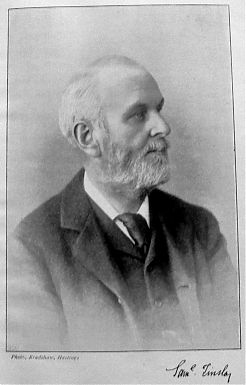by John Foley
A unique match took place on 28 January 1893 in the Great Western Hotel in Birmingham. Each team comprised 100 amateurs from their respective county organisations. The significance of the event is something which social historians will perhaps explain in time. There must have been a confluence of circumstances which led to the decision to organise the match. Terrestrial communications were better than today – the train system reached all corners of the land and punctuality was assured; letters sent by the Royal Mail were delivered promptly and would bear favourable comparison with today’s performance.
There was an emerging sense that sports should have the participation of the general population rather than being left to the aristocracy. The Football Association had recently been consolidated and the leading teams – from the public schools and the army – were soon to be eclipsed. 1892 was the first year in which the FA Cup Final was played in a purpose-built football stadium, Goodison Park, rather than on a cricket ground. The Victorian middle classes began to exert their influence by founding the governing associations of the popular sports we still play today. The Lawn Tennis Association was set up in 1888. Even the venerable County Cricket Championship only started in 1890.
The Victorians did not share the modern sense of nationhood. The organisation of chess was from the bottom up. The metropolitan chess clubs formed into county associations which then grouped together to form regional associations. The Southern Counties Chess Association was founded in the same year as the match. The British Chess Federation was not formed until 1902. This description was increasingly strained and as the constituent national chess organisations (Scotland, Wales) were established, the BCF in effect became the English Chess Federation in 2005.
It is arguable that the weakness of the European nation states had led the British to seek their own internal challenges through the self-organising middle classes. Italy did not become a modern nation until 1861 and Germany was not in the modern form until after the Franco-Prussian War (1870-71). European borders were fluid and passports were not required. In 1892, the Americans opened Ellis Island in New York to process the millions of Europeans seeking a new life.
In England, chess could not move too far down the populist track. After all, it is a game of the intellect and intellectual pursuits were (at that time at least) a respected characteristic of English gentlemen. The Adventures of Sherlock Holmes by Arthur Conan Doyle were about to be published, marking the triumph of rationality over intuition. In the match, traditional sources of authority prevailed. The top board for each team was assigned on the basis of social position rather than merit: each was a Cambridge-educated vicar who had developed their chess skills at Simpson’s Divan in the Strand.

For the South, the Reverend William Wayte (aged 64) was an Examiner at London University and had just published his monumental Dictionary of Greek and Roman Antiquities. Wayte had enjoyed his best year as far back as 1855 but had more recently won the Counties’ Chess Association tournament in 1884. For the North, the Reverend John Owen (aged 65), a prominent member of Liverpool Chess Club, had been vicar of Hooton near Chester for 31 years. He had been at his peak some two decades earlier and had beaten the legendary Paul Morphy in 1858 in which he deployed the eponymous Owen’s Defence (1.e4 b6).

J.H. Blake, the formidable Kingston player, who played board three for the South, was stronger than anybody else in the match (according to EDO retrospective ratings) and was at the zenith of his long career.

Blake’s game below against the reserve Billington was annotated by Samuel Tinsley in the British Chess Magazine of February 1893. Tinsley was an excellent player himself who went on to beat Bird (of the eponymous opening) and Chigorin (of the eponymous defence) and did not disgrace himself in one of the greatest tournaments of all time, Hastings 1895, won by the American Harry Pillsbury. Tinsley took the view that Blake had the advantage for most of the game. However, modern computer analysis shows that his opponent, T. H. Billington from Wolverhampton (who was a substitute), actually held the advantage for much of the game but pushed too hard and his position fell apart.
The game was critical because the South won by the narrowest of margins: 53½- 52½. The South won on the top boards, weighted by players from the strong metropolitan clubs. Billington went on to play an attacking game at Birmingham in 1906 which found its way into the chess anthologies (see second game below).
I am indebted to Anthony Fulton, the SCCU historian, for having provided the correct date for the match. The original version of this article had mistakenly stated the match as having taken place in 1892 whereas it was planned in 1892. There were two matches: ‘The Challenge: 1893 Northern Counties vs. Southern Counties Contest’ – and the follow up in the following year. Lloyds London Weekly Newsletter covered the 1893 match and the Morning Post covered the 1894 match.
T H Billington v J H Blake, Birmingham, 1892, C45 Scotch Game, Schmidt Variation
Billington v Spears, Birmingham, 1906, C67 Ruy Lopez, Berlin Defence, open variation
